#Birgit Walter
Explore tagged Tumblr posts
Text
Opera on YouTube
I've shared links to complete opera performances before, but I love to share them, so I thought I'd make a few masterposts.
These list are by no means the only complete filmed performances of these operas on YouTube, but I decided that ten links for each opera was enough for now.
By the way, some of the subtitles are just a part of the video, while others require you to click CC to see them.
Die Zauberflöte (The Magic Flute)
Hamburg Philharmonic State Opera, 1971 (Nicolai Gedda, Edith Mathis, William Workman, Christina Deutekom, Hans Sotin; conducted by Horst Stein; English subtitles)
Ingmar Bergman film, 1975 (Josef Köstlinger, Irma Urrila, Håkan Hagegård, Birgit Nordin, Ulrik Cold; conducted by Eric Ericson; sung in Swedish; English subtitles)
Salzburg Festival, 1982 (Peter Schreier, Ileana Cotrubas, Christian Bösch, Edita Gruberova, Martti Talvela; conducted by James Levine; Japanese subtitles)
Bavarian State Opera, 1983 (Francisco Araiza, Lucia Popp, Wolfgang Brendel, Edita Gruberova, Kurt Moll; conducted by Wolfgang Sawallisch; English subtitles)
Metropolitan Opera, 1991 (Francisco Araiza, Kathleen Battle, Manfred Hemm, Luciana Serra, Kurt Moll; conducted by James Levine; English subtitles)
Paris Opera, 2001 (Piotr Beczala, Dorothea Röschmann, Detlef Roth, Desirée Rancatore, Matti Salminen; conducted by Ivan Fischer; no subtitles)
Royal Opera House, Covent Garden, 2003 (Will Hartman, Dorothea Röschmann, Simon Keenlyside, Diana Damrau, Franz Josef Selig; conducted by Colin Davis; no subtitles) – Act I, Act II
La Monnaie, Brussels, 2005 (Topi Lehtipuu, Sophie Karthäuser, Stephan Loger, Ana Camelia Stefanescu, Harry Peeters; conducted by René Jacobs; French subtitles)
Kenneth Branagh film, 2006 (Joseph Kaiser, Amy Carson, Benjamin Jay Davis, Lyubov Petrova, René Pape; conducted by James Conlon; sung in English)
San Francisco Opera, 2010 (Piotr Beczala, Dina Kuznetsoca, Christopher Maltman, Erika Miklósa, Georg Zeppenfeld; conducted by Donald Runnicles; English subtitles)
La Traviata
Mario Lanfrachi studio film, 1968 (Anna Moffo, Franco Bonisolli, Gino Bechi; conducted by Giuseppe Patané; English subtitles)
Glyndebourne Festival Opera, 1987 (Marie McLaughlin, Walter MacNeil, Brent Ellis; conducted by Bernard Haitink; Italian and Portuguese subtitles)
Teatro alla Scala, 1992 (Tiziana Fabbricini, Roberto Alagna, Paolo Coni; conducted by Riccardo Muti; English subtitles)
Royal Opera House, Covent Garden, 1994 (Angela Gheorghiu, Frank Lopardo, Leo Nucci; conducted by Georg Solti; Spanish subtitles)
Teatro Giuseppe Verdi, 2003 (Stefania Bonfadelli, Scott Piper, Renato Bruson; conducted by Plácido Domingo; Spanish subtitles)
Salzburg Festival, 2005 (Anna Netrebko, Rolando Villazón, Thomas Hampson; conducted by Carlo Rizzi; no subtitles)
Los Angeles Opera, 2006 (Renée Fleming, Rolando Villazón, Renato Bruson; conducted by James Conlon; English subtitles)
Opera Festival St. Margarethen, 2008 (Kristiane Kaiser, Jean-Francois Borras, Georg Tichy; conducted by Ernst Märzendorfer; English subtitles)
Teatro Real di Madrid, 2015 (Ermonela Jaho, Francesco Demuro, Juan Jesús Rodríguez; conducted by Renato Palumbo; English subtitles)
Teatro Massimo, 2023 (Nino Machiadze, Saimir Pirgu, Roberto Frontali; conducted by Carlo Goldstein; no subtitles)
Carmen
Herbert von Karajan studio film, 1967 (Grace Bumbry, Jon Vickers; conducted by Herbert von Karajan; English subtitles)
Vienna State Opera, 1978 (Elena Obraztsova, Plácido Domingo; conducted by Carlos Kleiber; English Subtitles)
Francisco Rosi film, 1982 (Julia Migenes, Plácido Domingo; conducted by Lorin Maazel; English subtitles)
Metropolitan Opera, 1987 (Agnes Baltsa, José Carreras; conducted by James Levine; English subtitles)
London Earls Court Arena, 1989 (Maria Ewing, Jacque Trussel; conducted by Jaques Delacote; English subtitles)
Royal Opera House, Covent Garden, 1991 (Maria Ewing, Luis Lima; conducted by Zubin Mehta; English subtitles) – Acts I and II, Acts III and IV
Arena di Verona, 2003 (Marina Domashenko, Marco Berti; conducted by Alain Lombard; Italian subtitles)
Royal Opera House, Covent Garden, 2006 (Anna Caterina Antonacci, Jonas Kaufmann; conducted by Antonio Pappano; English subtitles) – Acts I and II, Acts III and IV
Metropolitan Opera, 2010 (Elina Garanca, Roberto Alagna; conducted by Yannick Nézet-Séguin; English subtitles) – Acts I and II, Acts III and IV
Opéra-Comique, 2023 (Gaëlle Arquez, Frédéric Antoun; conducted by Louis Langrée; English subtitles)
La Bohéme
Franco Zeffirelli studio film, 1965 (Mirella Freni, Gianni Raimondi; conducted by Herbert von Karajan; English subtitles)
Metropolitan Opera, 1977 (Renata Scotto, Luciano Pavarotti; conducted by James Levine; no subtitles)
Teatro alla Scala, 1979 (Ileana Cotrubas, Luciano Pavarotti; conducted by Carlos Kleiber; no subtitles)
Opera Australia, 1993 (Cheryl Barker, David Hobson; conducted by Julian Smith; Brazilian Portuguese subtitles)
Teatro Regio di Torino, 1996 (Mirella Freni, Luciano Pavarotti; conducted by Daniel Oren; Italian subtitles)
Teatro alla Scala, 2003 (Cristina Gallardo-Domâs, Marcelo Alvarez; conducted by Bruno Bartoletti; Spanish subtitles)
Zürich Opera House, 2005 (Cristina Gallardo-Domâs, Marcello Giordani; conducted by Franz Welser-Möst; no subtitles)
Robert Dornhelm film, 2009 (Anna Netrebko, Rolando Villazón; conducted by Bertrand de Billy; no subtitles)
Opera Australia, 2011 (Takesha Meshé Kizart, Ji-Min Park; Shao-Chia Lü; no subtitles)
Sigulda Opera Festival, 2022 (Maija Kovalevska, Mihail Mihaylov; conducted by Vladimir Kiradjiev; English subtitles)
#opera#youtube#complete performances#die zauberflöte#the magic flute#la traviata#carmen#la boheme#wolfgang amadeus mozart#giuseppe verdi#georges bizet#giacomo puccini
45 notes
·
View notes
Text
Race and Cultural Conflict
Savages and Civilized Men: Race and Power Dynamics on the Pequod

Herman Melville’s Moby-Dick presents the Pequod as a microcosm of 19th-century America, where diverse racial and cultural identities coexist under strained power dynamics. Queequeg, Pip, Tashtego, and Daggoo are all positioned outside the dominant white, Christian framework represented by figures like Ahab and Starbuck. Yet, these non-Western characters contribute essential skills and labor to the ship’s operations. Their presence reflects Melville’s ambivalence toward America’s ideals of equality and democracy.
As T. Walter Herbert argues, Moby-Dick grapples with the contradictions inherent in a society that preaches equality while perpetuating racial exploitation and exclusion. Herbert contends that the novel’s “obsessive need to strike through the mask” reflects Ahab’s metaphysical crisis and a broader societal anxiety about identity and hierarchy (Herbert 45). Similarly, Birgit Brander Rasmussen’s theory of Indigenous literacies reveals how Queequeg’s tattoos act as non-alphabetic texts that resist colonial erasure (Coronado 86–87). Through these characters, Melville critiques America’s failure to reconcile its ideals of democracy with its systemic injustices.
#pequod#bookworm#literature#MobyDick#ThePequod#AmericanStudies#RaceAndClass#Democracy#VisualAnalysis
2 notes
·
View notes
Text
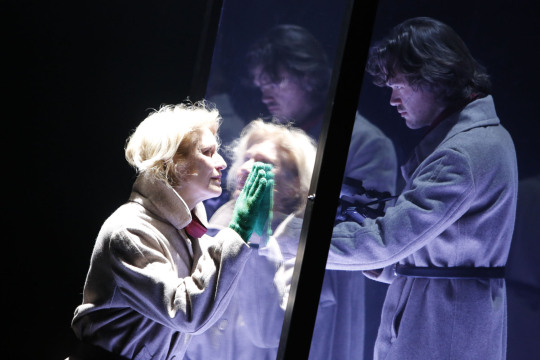


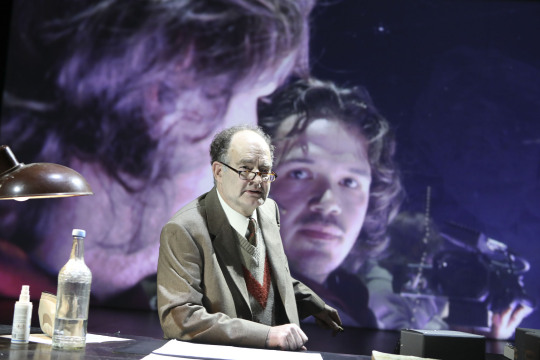
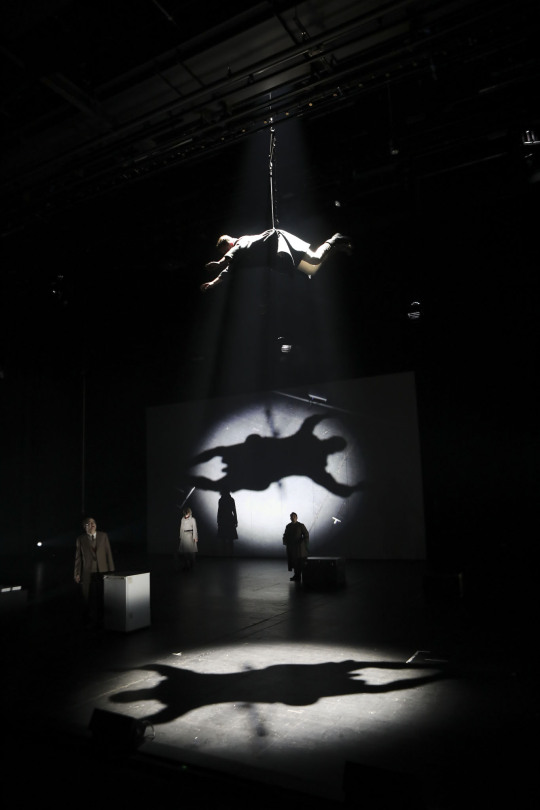
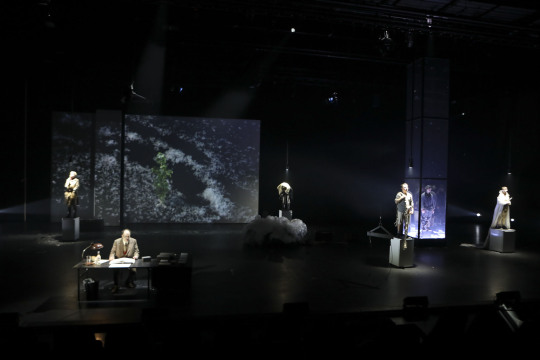
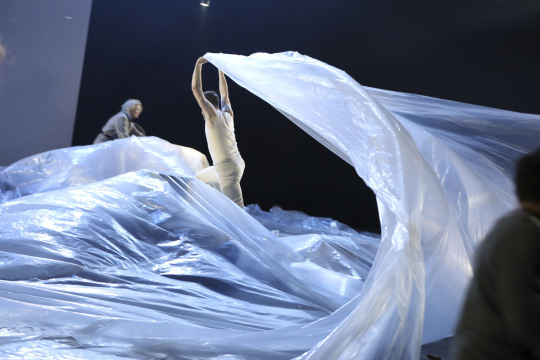
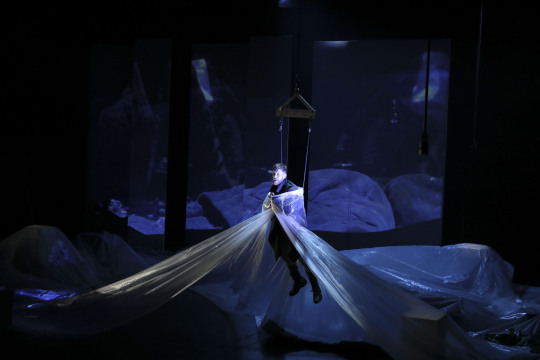
Athemschaukel
Schauspiel Köln
with
Martin Reinke, Katharina Schmalenberg, Stefko Hanushesko, Birgit Walter, Nikolaus Benda, Justus Maier
Director: Bastian Kraft
Staging Peter Baur
Costumes: Jemena Miletic
Dramaturgy: Sibylle Dudek
Music: Björn SC Deigner
Lightning: Michael Gööck
Video: Jonas Link
Live Camera: Jonathan Kastl
Premiere October 22 2021
pictures: Birgit Hubfeld
#Athemschaukel#Schauspiel Köln#Martin Reinke#Katharina Schmalenberg#Stefko Hanushesko#Birgit Walter#Nikolaus Benda#Justus Maier#Director: Bastian Kraft#Staging Peter Baur#Costumes: Jemena Miletic#Dramaturgy: Sibylle Dudek#Music: Björn SC Deigner#Lightning: Michael Gööck#Video: Jonas Link#Live Camera: Jonathan Kastl#Premiere October 22 2021#pictures: Birgit Hubfeld
0 notes
Text
Sources and acknowledgments
The author would like to thank the following for their help:
Erin Amico; Michael Amiridis; John Austin; Ed Bachrach; Carmelo Barbaro; Tom Barrett; Tim Bartik; Austin Berg; Scott Brave; Max Brickman; Sherrod Brown; Pete Buttigieg; Kendall Byram; Dan Caulkins; Hayley Child; Chris, in Assumption; Kathy Cramer; Kate Collignon; John Cranley; Rick Cruse; Art Cullen; Donald Dennis; Orphe Divounguy; Mike Duggan; Rahm Emanuel; Thea Ewing; Micah Ezekiel; Flash, in Decatur; Tony Flora; Charles Franklin; Tim Franklin; Laura Frerichs; Tim Frisbie; Jeremy Jacobs; Edward Glaeser; Anika Goss-Foster; Nathan Grawe; John Gurda; Beth Hansen; Dave Harrison; Brad Henderson; Tom Henry; Eric Herman; Walter Johnson; Aaron Jones; Robert Jones; Paul Judge; Bruce Katz; Ryan Kelly; Thomas Klier; Birgit Klohs; Paul Krugman; Bob Leonard; Lori Lightfoot; Richard Longworth; Jeffrey Lyttle; Jeremy Manier; Bert Matthews; Richard Mattoon; Sonya Mays; Kenny McDonald; Scot McLemore; Leslie McGranahan; Rick Melcher; Julie Moore; Aidan Mouat; Tom Murphy; David Oppedahl; Mark Patton; Tef Poe; Darrin Redus; Brian Reisinger; Aaron Renn; Jamala Rogers; Rafael Salmi; John Sampson; Jeff Sloan; Tom Sloan; Sloan Spalding; Ramesh Srinivasan; Diane Swonk; Lauren Underwood; John Urbanus; Mike Venerable; Jay Walder; Thomas Walstrum; Ray Waters; Ben Wikler; Bob Zemsky.
A list of books and reports used for this report follows.
Books:
“Bleeding Out; The devastating consequences of urban violence, and a bold new plan for peace in the streets”. By Thomas Abt.
“Dignity, Seeking Respect in Back Row America”. By Chris Arnade.
“The New Chicago Way; Lessons from other big cities”. By Ed Bachrach and Austin Berg.
“Shortest Way Home; One mayor’s challenge and a model for America’s future”. By Pete Buttigieg.
“The Politics of Resentment: Rural Consciousness in Wisconsin and the Rise of Scott Walker”. By Katherine Cramer.
“Nature’s Metropolis, Chicago and the Great West”. By William Cronon.
“Storm Lake; A chronicle of change, resilience, and hope from a Heartland Newspaper”. By Art Cullen.
“Evicted; Poverty and profit in the American city”. By Matthew Desmond.
“The Nation City; Why mayors are now running the world”. By Rahm Emanuel
“Our Towns; A 100,000 mile journey into the heart of America”. By James Fallows and Deborah Fallows.
“What’s the matter with Kansas? How conservatives won the Heart of America.” By Thomas Frank.
“Triumph of the City; How our greatest invention makes us richer, smarter, greener, healthier and happier”. By Edward Glaeser.
“The Making of Milwaukee”. By John Gurda.
“Janesville; An American Story”. By Amy Goldstein.
“The Fall of Wisconsin; the conservative conquest of a progressive bastion and the future of American politics”. By Dan Kaufman.
“American Summer; Love and death in Chicago”. By Alex Kotlowitz.
“The Heartland, An American History”. By Kristin L Hoganson.
“The Broken Heart of America; St Louis and the Violent History of the United States”. By Walter Johnson.
“The New Localism, How Cities can Thrive in the age of Populism”. By Bruce Katz and Jeremy Nowak.
“The Promised Land; the great black migration and how it changed America”. By Nicholas Lemann.
“Sundown Towns, A Hidden Dimension of American Racism”. By James W Loewen.
“Caught in the Middle; America’s heartland in the age of Globalism”. By Richard Longworth.
“The South Side; A portrait of Chicago and American Segregation”. By Natalie Y. Moore.
“Cahokia; Ancient America’s Great City on the Mississippi”. By Timothy Pauketat.
“Great American City; Chicago and the enduring neighbourhood effect”. By Robert Sampson.
“North America”. By Anthony Trollope.
“The Warmth of Other Suns; the epic story of America’s great migration”. By Isabel Wilkerson.
Reports:
“A Vital Midwest; the path to a new prosperity”. By John Austin and Alexander Hitch; The Chicago Council on Global Affairs. 2020.
“Between the Great Migration and Growing Exodus: the future of black Chicago?” By William Scarborough, Iván Arenas, and Amanda E. Lewis. Institute for Research on Race and Public Policy, University of Illinois at Chicago. 2020.
“How stagnating cities can prepare for the future”. Aaron Renn. Manhattan Institute. 2019.
“Jobs for the Heartland: Place-based policies in 21 st century America”. By Benjamin Austin, Edward Glaeser, Lawrence Summers. Brookings Papers on Economic Activity. 2018.
“Midwest success stories, these 10 cities are blooming not rusting”. Aaron Renn. Manhattan Institute. 2019.
“The State of the Heartland”. Mark Muro, Jacob Whiton, Robert Maxim, Ross De Vol. Metropolitan Policy Program at Brookings. 2018
“Why the Garden Club couldn’t save Youngstown; Civic infrastructure and mobilization in economic crises”. Sean Safford. 2004
The Midwest an outsized punch
This article appeared in the Special report section of the print edition under the headline "Sources and acknowledgments"
https://ift.tt/3g8lJ4S
1 note
·
View note
Note
Hello! I've seen you like opera and was wondering if you had favorite video/footage (not audio recordings) of your favorite performances/singers of Adriana Lecouvreur, Rosina and Basilio (Barber of Seville), Fidelio and Pizarro, Manrico, Rigoletto, Fiesco, Reiza, Princess Eboli, Tamino, Lady Macbeth, Tosca, Mimi, Canio, Figaro (Mozart), Don Giovanni and Commendatore, Octavian, Lensky. They're my favorite characters in opera and I wanted to know your examples. Thank you!
These are some of my absolute favorite singers in each role:Adriana Lecouvreur | Monsterrat CaballéFidelio | Christa Ludwig Lady Macbeth | Shirley VerrettMimi | Renata Tebaldi Octavian | Brigitte Fassbaender Princess Eboli | Elena Obraztsova Reiza | Birgit Nilsson Rosina (Mozart) | Gundula Janowitz Tosca | Maria CallasBasilio (Rossini) | Giulio Neri Canio | Mario del Monaco Fiesco | Nicolai Ghiaurov Figaro (Mozart) | Hermann PreyDon Giovanni | Cesare SiepiIl Commendatore | Kurt Moll Lensky | Ivan Kozlovsky Manrico | Franco Corelli Pizarro | Walter BerryRigoletto | Tito Gobbi Tamino | Fritz Wunderlich
80 notes
·
View notes
Photo

Including works by Arakawa and Madeline Gins, Lutz Bacher, Günter Brus, Sarah Charlesworth, COBRA, Moyra Davey, Manfred Deix, Gina Folly, Nathaniel Goldberg/Inge Grognard, Lyle Ashton Harris, Benjamin Hirte, Birgit Jürgenssen, Marc Kokopeli, Nicolas de Larmessin, Tobias Madison, Till Megerle, Johnny Moke for Adeline André, Moschino, Ebecho Muslimova, Kayode Ojo, Meret Oppenheim, Walter Pichler, Lucia Elena Průša, Diamond Stingily, Marija Tavčar, Rosemarie Trockel, Heimo Zobernig
life and limbs is the fourth exhibition in Swiss Institute’s Architecture and Design Series, curated by Austrian artist Anna-Sophie Berger. Considering corporeality as a primary concern for design, Berger here assembles a group of works that register the body as a habitat that can be imaginatively stretched, altered, modified, adorned, replicated or destroyed. Including works from a variety of disciplines, movements and periods, Berger takes as a starting point two designs for necklaces by the Swiss surrealist Meret Oppenheim: one resembling a baby’s legs wrapped around a neck, and the other featuring a pendant with a grinning toothy mouth smoking a cigarette, designed to hang at the softest part of the throat. Combining morbid humor with glee, vulnerability with threat, life with limbs, the drawings represent prevailing concerns within Berger’s art practice and the constellation of works in this exhibition.
Berger originally trained in fashion and has explored issues of protection and care – as they might refer to clothing, housing, public space and law – in her work as an artist. The exhibition’s emphasis on risk, alluded to in its title, relates to the idea that the human body, as Jean Paul Sartre described it, symbolizes “our defenseless state as objects,” and that getting dressed means to camouflage this fact: “to claim the right of seeing without being seen; that is, to be pure subject.”[1]
Simultaneously, Berger often invokes transgressive figures such as fools, jesters, and artists who test social boundaries or are given license through states of exception such as carnivals, costumes and theater, and the design tradition of the grotesque. Such themes are synthesized in the seventeenth century engravings of Nicolas de Larmessin named Costumes of the Trades, in which the professions become wearable garments. An architect’s apparel is constructed from pillars and bricks, while a confectioner’s dress is made from decorative boxes of almonds and chocolates, so that the bodies become hybridized into buildings or foodstuffs.
Like these figures, each work in the exhibition troubles the limits of what a body can consume, process, reach and become, from the metamorphosis that comes from wearing a garment to complete transfigurations into surreal, new beings.
5 notes
·
View notes
Photo

Including works by Arakawa and Madeline Gins, Lutz Bacher, Günter Brus, Sarah Charlesworth, COBRA, Moyra Davey, Manfred Deix, Gina Folly, Nathaniel Goldberg/Inge Grognard, Lyle Ashton Harris, Benjamin Hirte, Birgit Jürgenssen, Marc Kokopeli, Nicolas de Larmessin, Tobias Madison, Till Megerle, Johnny Moke for Adeline André, Moschino, Ebecho Muslimova, Kayode Ojo, Meret Oppenheim, Walter Pichler, Lucia Elena Průša, Diamond Stingily, Marija Tavčar, Rosemarie Trockel, Heimo Zobernig
life and limbs is the fourth exhibition in Swiss Institute’s Architecture and Design Series, curated by Austrian artist Anna-Sophie Berger.
https://www.swissinstitute.net/exhibition/swiss-institute-annual-architecture-and-design-series-fourth-edition-life-and-limbs-curated-by-anna-sophie-berger/
2 notes
·
View notes
Photo

Verkauf: Verlag F. Oetinger Hamburg - Gebt uns Bücher gebt uns Flügel - Almanach 1963. "Im Sommer 1963 erschien der erste Oetinger Almanach unter dem Titel "Gebt uns Bücher, gebt uns Flügel". Der Almanach, der Mitte der 80er-Jahre in "Oetinger Lesebuch" umbenannt wurde, war von Anfang an mehr als eine Werbeinitiative: "Das ist ein reines Lese- und Anschauvergnügen: Oetingers Lesebuch", hieß es 1990 im Börsenblatt des Deutschen Buchhandels. Neben Leseproben aus Neuerscheinungen und Informationen zu Auszeichnungen bot der Almanach vor allem Beiträge von namhaften Kinderbuchkennern und Kritikern wie Walter Scherf, Sybil Gräfin Schönfeldt, Prof. Birgit Dankert oder Prof. H. H. Ewers. Hausautoren wie Astrid Lindgren, Paul Maar oder Christine Nöstlinger sowie Übersetzer und Illustratoren porträtierten sich selbst oder richteten sich aus besonderem Anlass persönlich an ihre jungen Leser. Oft hatten die Jahrbücher einen thematischen Schwerpunkt, etwa einen bestimmten Autor anlässlich eines runden Geburtstages. Der letzte Band erschien 2007 und war Astrid Lindgren zum 100. Geburtstag gewidmet. Heute sind die Lesebücher zu Sammlerstücken für Kenner der Kinder- und Jugendbuchszene geworden und nur noch antiquarisch zu erhalten". Bezugsquelle: Oetinger Verlag. Den Link zu meinen Verkaufsangeboten findet Ihr im Profil. #oetingerverlag #hamburg #geben #bücher #flüpgel #almanach #lesebuch #lesen #lesevergnügen #sammeln #büchertipp #buchblogger #bücherwelt #buchtipp #bücherauslese #lesen #bücherwurm #buchliebe #büchersüchtig #bücherempfehlung #buchempfehlung #bücherliebe #ebay #schorschidk #zuverkaufen #sofortkauf (hier: Silke's Fundgrube) https://www.instagram.com/p/CbFjm5OKbgq/?igshid=NGJjMDIxMWI=
#oetingerverlag#hamburg#geben#bücher#flüpgel#almanach#lesebuch#lesen#lesevergnügen#sammeln#büchertipp#buchblogger#bücherwelt#buchtipp#bücherauslese#bücherwurm#buchliebe#büchersüchtig#bücherempfehlung#buchempfehlung#bücherliebe#ebay#schorschidk#zuverkaufen#sofortkauf
0 notes
Text
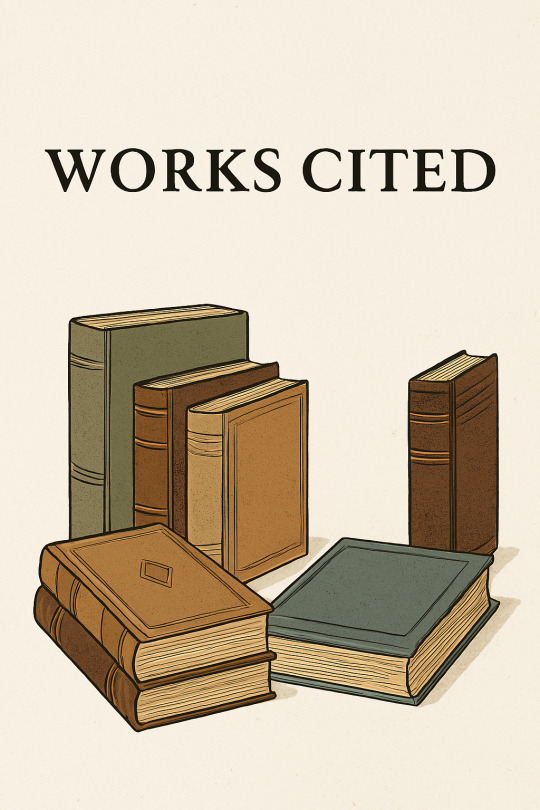
Bhabha, Homi K. The Location of Culture. Routledge, 1994.
Brodhead, Richard H. Hawthorne, Melville, and the Novel. University of Chicago Press, 1976.
Coronado, Teresa. Review of Queequeg’s Coffin: Indigenous Literacies and Early American Literature, by Birgit Brander Rasmussen. Rocky Mountain Review, vol. 67, no. 1, 2013, pp. 86–87. JSTOR, www.jstor.org/stable/23609972.
Herbert, T. Walter. Moby-Dick and Calvinism: A World Dismantled. Rutgers University Press, 1977.
Leiter, Louis. “Queequeg’s Coffin.” Nineteenth-Century Fiction, vol. 13, no. 3, 1958, pp. 249–254. JSTOR, www.jstor.org/stable/3044383.
Melville, Herman. Moby-Dick; or, The Whale. Edited by Harrison Hayford and Hershel Parker, 2nd ed., W. W. Norton & Company, 2002.
0 notes
Photo

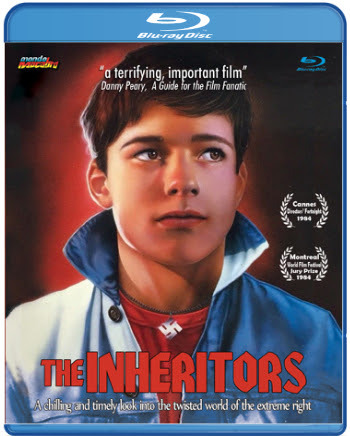
Mondo Macabro releasong BLOODLUST (1977) and THE INHERITORS (1983) this October!
BLOODLUST (1977)– The world Blu-ray premier of a sick 1970s shocker!
Label: Mondo Macabro Release Date: October 9th 2018 Duration: 92 Minutes Region Code: A Video: 1080p HD Widescreen (1.78:1) Audio: English & German PCM Mono Director: Marijan Vajda Cast: Werner Pochath, Ellen Umlauf, Birgit Zamulo, Gerhard Ruhnke, Peter Hamm, Charly Hiltl, Hary Olsbauer, Marion Messner
Haunted by a childhood trauma... a deaf-mute accountant develops a fixation with blood spilling across his skin. Brief flirtations with ketchup and red ink seem to satisfy him at first, but he soon develops a taste for the real thing. Though he nurses a weird fascination for a neighborhood girl who passes the time by dancing on the rooftop, he remains socially withdrawn with his co-workers and can't even find comfort in the arms of a hooker. One night he breaks into the property of the local undertaker and ravages the prettiest female corpse. Now addicted, he habitually raids the tombs of the dead and drinks blood from their throats via a spiked, double-pronged glass straw. Authorities and citizens are incensed by these crimes and the search is on for this modern day vampire.
BLOODLUST is one of the darkest and most affecting horror movies to come out of 1970s Europe. Based on the macabre true story of Kuno Hofmann, the “Vampire of Nuremberg”, the film plays like a kind of grown-up fairy tale, albeit one that includes bloodsucking, eyeball evisceration and voyeuristic lesbian sex scenes among a host of other activities. Cut and banned in many countries, this is the full-length version in all its gruesome, gory, glory.
SPECIAL FEATURES: - Brand new 2k transfer from the film negative. - Exclusive interview with the assistant director. - Exclusive interview with actress Birgit Zamulo. - Original UK trailer. - German/English audio choice. - Newly created, optional English subtitles. - Mondo Macabro previews.
THE INHERITORS (1983)- A chilling and timely look into the twisted world of the extreme right.
Label: Mondo Macabro Release Date: October 9th 2018 Duration: 90 Minutes in English and German Region Code: A Video: 1080P HD Widescreen (1.78:1) Audio: English & German PCM Mono Director: Walter Bannert Cast: Nikolas Vogel, Roger Schauer, Wolfgang Gasser, Anneliese Stöckl-Eberhard, Jaromír Borek, John Ottwald
On his way home from school, 16-year-old Thomas helps Charly, an unemployed teenager, escape from the police. Despite their differing backgrounds, the boys become good friends and Charly persuades Thomas to join a neo-Nazi youth group. Intrigued and confused by his new friends, Thomas, who is experiencing trouble at home and school, is drawn deeper into a web of sex and violence that leads to a tragic end.
In 1979, Austrian film director Walter Bannert was among a group of Vienna cafe patrons beaten up by a gang of young neo-Nazis who wrecked the place. Researching the burgeoning movement in West Germany and Austria for 3 years, Bannert infiltrated their private meetings by convincing party leaders that he wanted to make an objective documentary. His film, THE INHERITORS is the result, a disturbing and timely fictional drama based entirely on real characters, events and conversations that Bannert came across in the neo-Nazi camps. The film was highly controversial on its original release and theatres screening it was threatened with violent action by neo-Nazi sympathizers. Although it is now over thirty years old, the film remains incredibly relevant as we witness, across the world, the rebirth of right-wing extremism using exactly the same lies and tactics exposed so powerfully in this film.
THE INHERITORS was not screened in its native country for many years until it was rediscovered at the 2015 Viennale Exhibition, where it was praised as a rare and powerful example of Austrian genre cinema with a strong political message. The film was selected at the 1984 Cannes Film Festival for the prestigious Directors Fortnight section. In the same year, it also won a jury prize at the Montreal World Film Festival.
SPECIAL FEATURES: - Brand new 2k scan from the film negative. - Exclusive 12-page booklet with essays by Michael Gingold and filmmaker Paul Poet. - Original theatrical trailer. - English/German audio choice. - Newly created subtitles
https://mcbastardsmausoleum.blogspot.com/2018/08/mondo-macabros-october-2018-new.html
3 notes
·
View notes
Note
😍🎤
😍 celebrity crush
In terms of mainstream celebrity, Elizabeth Debicki probably creates the most palpable attraction onscreen for me compared to anyone else in Hollywood. My list of opera celebrity crushes, however, is much longer…
🎤 favorite singer
Ohhh, this one’s tough. Walter Berry and Birgit Nilsson spring to mind, though for very different reasons. Probably my favorite that I’ve seen live is Joyce DiDonato.
1 note
·
View note
Text
2015 Was One of the Deadliest Years for Journalists Around the World
One year ago, the world was shocked when Islamist militants murdered eight journalists from the French satirical magazine Charlie Hebdo in the heart of Paris. The attacks set the stage for one of the deadliest years for journalists around the world.According to the Committee to Protect Journalists, 71 journalists were killed while on the job in 2015, making it the fourth deadliest year since CPJ began tracking these deaths in 1992.
An additional 24 were killed but the motives were unconfirmed, meaning that the number of reporters killed in the line of duty may be higher.The deaths in 2015 continue a worrying trend. According to CPJs figures, the five deadliest recorded years for journalists occurred within the past nine years.
The countries with the highest number of journalists killed in 2015, in order, were Syria, France, Brazil, Yemen, Bangladesh, South Sudan and Iraq.Extremist groups were responsible for the deaths of 30 journalists in 2015, with 14 dying in Syria while covering the long-standing civil war and the rise of ISIS. ISIS militants murdered five additional journalists in Iraq.
In Bangladesh, secular bloggers who criticize religious fundamentalism and participate in the freethinker movement remain in constant danger five were brutally killed in 2015 and many more were routinely threatened. A recent New York Times profile of these bloggers was censored in Pakistan, a decision made by local printers and rightly condemned by the Times.Five journalists were killed in South Sudan in the course of reporting in 2015.
Journalist Peter Julius Moi was shot dead only days after President Salva Kiir made comments perceived as threats against members of the media. Earlier in the year, four journalists were killed when gunmen ambushed a political convoy they were in.The threat against journalists in South Sudan continued into this year: Only days ago, authorities detained a journalist because an article he wrote that criticized the ruling party annoyed the National Security Service.
According to CPJ, nearly 200 journalists around the world were in prison in 2015, representing only a slight decline over 2014. China, Egypt and Turkey jailed the greatest numbers of journalists.The case of Washington Post correspondent Jason Rezaian, who has been detained by the Iranian government for a year and a half under various charges, including espionage, came to the forefront in 2015 when he was convicted and sentenced to prison.
Few details of his conviction and prison sentence are known.One of the highest-profile cases occurred in August when Turkish officials jailed three VICE News journalists. While two of the journalists were released shortly after their arrests, Mohammed Rasool remained behind bars until his release just a few days ago.
Several incidents here in the U. S. highlighted how reporting, either by professional journalists or everyday people committing acts of journalism, brings risks even in democratic societies.
WDBJ-TV journalists Alison Parker and Adam Ward were shot and killed on live TV in August by a former employee of the station in Roanoke, Virginia. In addition, St. Louis County filed charges against reporters Ryan J.
Reilly, Wesley Lowery and Tom Walters, who were arrested in 2014 while covering the Ferguson protests. Free Press and over 21,000 of our members condemned the arrests and called on the County Counselor to drop the charges. The case is ongoing.
As we enter 2016, the threats to journalists and freedom of expression remain serious and varied. As states turn to more sophisticated ways of chilling speech around the world, its more critical than ever to protect journalists who so often put themselves in harms way to report the truth.Original photo by Flickr user Birgit SpeulmanOriginally published at on January 8, 2016
0 notes
Text
The discussion about “literature” in Asia Minor has received new impulses in recent years, in that questions have been raised about the transmission history, origin and compilation, but also about the purpose and sponsorship of such texts. For some time now, literary theories have also been given greater consideration in the development of texts from Asia Minor. Such questions were therefore - in the casual connection to two conferences held in 2003 and 2005, which primarily focused on religious topics of Anatolian tradition - at the center of a symposium in February 2010 in the Department of Religious Studies of the Institute for Oriental and Asian Studies from the University of Bonn. The reference to the two earlier conferences is not only established by the same place of publication, but also, in terms of content, there are undoubtedly points of contact between the history of religion and the history of literature in Hittite Asia Minor; for a considerable part of the written tradition of the Hittites is related to rituals, mythologies and the transmission of religious ideas.
As a pragmatic basis, “literature” was understood as a culture worthy of handing down written material for the symposium's question, without making this description too narrow for the symposium. This made it possible in the context of the contributions to raise a number of questions that could focus on different aspects of the literary tradition of Hittite culture depending on the interests. Some of the questions discussed during the symposium focused on literary theories, and some of the processes of literary production and dissemination were outlined, whereby stylistic forms of expression and motifs in this function were also considered.
Despite the different approaches of the authors, it is not difficult to see thematic similarities in the present volume. Questions of literary theory and literary genres are mainly in the center of the contributions by Birgit Christiansen, Paola Dardano, Amir Gilan, Manfred Hutter, Maria Lepši and Jared L. Miller; Complementary to this literary block are the contributions by Silvia Alaura, José L. García Ramón, Alwin Kloekhorst, Elisabeth Rieken and Zsolt Simon, who examine motifs and linguistic forms of expression in Anatolian texts. How understanding of literature - be it with regard to the statements of a literary work or be it with regard to the conception of such a work - is also promoted by the comparison of texts can be seen in the present volume in the contributions by Sylvia Hutter-Braunsar, Michel Mazoyer, Ian Rutherford, Karl Strobel and Joan Goodnick Westenholz. Finally, the last - no less important - group is the contributions by Gary Beckman, Carlo Corti, Magdalena Kapełuś and Piotr Taracha, who focus on the reconstruction and compilation of individual texts - as the basis for future literary analyzes of these texts.
For the present volume, the individual contributions have been editorially standardized as far as possible, but spellings of names and sometimes also transcriptions of Anatolian words, for which the authors have good reasons, have been left in different forms within the texts. The editorial standardization therefore primarily concerned citation methods and abbreviations, the latter can be broken down using the attached list of abbreviations.
1. The Illuyanka text is undoubtedly one of the best-known Hittite stories. The text was presented by Archibald Sayce in the 1920s. Shortly thereafter, the linguist Walter Porzig drew attention to parallels to the ancient Greek traditions, especially to the Typhon myth. The first "modern" editing of the text was done by Gary Beckman. In the meantime, numerous translations and studies have appeared that illuminate the text from different perspectives. The fascination that the Illuyanka text exudes is partly due to the fact that the myth has been handed down in two different versions - on one and the same board. The text also owes its popularity to the numerous parallels to other narratives of the type "snake dragon slayer". Tales of this kind about a hero who defeats and kills a serpentine dragon have been widespread throughout history in many parts of the world and continue to be so today. They are as good as universal. History can fulfill numerous functions - etiologies of extraordinary natural phenomena, ideological claims to rule, cosmological considerations about the beginnings of the world, religious symbolism or literary entertainment - which often show fairly constant plot structures and are subject to their own narratological logic. As Calvert Watkins (1995) was able to show, many of these narratives also share poetic formulas which are documented for the first time in the Hittite Illuyanka text. It is noticeable that many kite snakes have an affinity for water in common - an ambivalent and conflicting element in itself. "The fundamental element in the dragon’s power is the control of water. Both in its beneficent and destructive aspects water was regarded as animated by the dragon ”, stated G. Elliot Smith (1919: 103). Also Illuyanka, the (eel) snake, if one follows Joshua Katz (1998) and favors the old etymology of Illuyanka as illi / u (eel, English eel) and -anka (snake, cf. Latin anguis) (see now also Melchert, in press), is closely associated with water in both stories. In addition, in many cultures dragons have a special affinity for water sources (Zhao 1992: 113-114), which also play a role in the Illuyanka text. In the ancient Orient, the role of this hero is in most cases a weather god in one of his characters. The role of the enemy is occupied in different epochs and regions of the Ancient Orient by the (primordial) sea and a number of eerie creatures that inhabit it or originate from it. In the Syrian region, the battle of the weather god against têmtum is already mentioned in ancient Babylonian times; in a letter from the ambassador Maris in Aleppo, the weather god of Aleppo traces the kingship back to the investiture of his weapons with which he fought against têmtum (Durand 1993: 41-61; Schwemer 2001, 226-232). The weapons of the weather god from this fight, as well as the mountains Namni and Ḫazzi, are mentioned in the Hittite Bišaiša text (CTH 350), a mythological story that has unfortunately only survived fragmentarily. There the mountain god Bišaisa tells the goddess Ištar - after he raped the sleeping goddess, but was caught by her and begged for his life - about the weapons of the weather god with which he defeated the sea (Schwemer 2001: 233; Haas 2006: 212f .). The famous passage in the Puḫānu text, which is often interpreted as the “crossing of the Taurus”, is in my opinion linked. to this mythologist (Gilan 2004: 277-279). The fight of the weather god against the sea is also a theme of the Hurrian-Hittite Kumarbi cycle. In order to regain control over the world of gods, Kumarbi creates several terrible adversaries who are supposed to defeat the weather god Teššop. Three of these adversaries are closely related to water. At first the sea god himself was an opponent of the weather god. The song from the sea, which is mentioned in Hurrian and Hittite fragmentary myth and ritual fragments as well as in table catalogs, was probably made during a festival for Mount Ḫazzi (Zaphon, Kasion, today Keldağ on the Bay of İskenderun, the scene of many war and dragon stories ) presented.
Ullikummi was also closely associated with water. Another adversary was Ḫedammu, a snake-like monster (André-Salvini / Salvini 1998: 9-10; Dijkstra 2005). Ḫedammu was conceived by Kumarbi with the gigantic daughter of the sea and because of his voracity caused a famine that threatened to destroy mankind. Help was provided by Ištar, who went to the beach for nude bathing, seduced Ḫedammu there, who crawled excitedly out of the water to land, where he met his end. The Ḫedammu story shows many similarities to the first Illuyanka story (most recently Hoffner 2007: 125), while the "Anatolian" myth of "Telipinu and the daughter of the sea" (Hoffner 1998: 26-28; Haas 2006: 115-117) has a lot in common with the second Illuyanka story. In both narratives, a marriage - and the obligation associated with it - served to prevent danger. 2. The great importance of the Illuyanka text for the history of religion, however, is primarily due to the fact that the mythical narratives seem to be embedded in the ritual - an assumption that has strongly influenced the interpretation of the narratives in research. It is precisely this supposed connection between myth and ritual that will occupy me in the following. Before I get into that, however, I would like to briefly outline the scientific discussion about the relationship between myth and ritual, as the discussion is of crucial importance in interpreting the Illuyanka narrative (s). The question of the relationship between myth and ritual has shaped myth and ritual theory like no other since the end of the 19th century. It is associated with scholars such as the Old Testament scholar William Robertson Smith, who was the first to point out "the dependence of myth on ritual". The theory was further developed by Sir James Frazer in his monumental masterpiece "The Golden Bough", which grew from edition to edition. Frazer examined various ancient gods, which he interpreted as vegetation gods - including Adonis, Attis, Demeter, Tammuz, Osiris and Dionysus. The myth of death and resurrection of these deities was ritually performed annually during the New Year celebrations to guarantee the revitalization of the vegetation (Versnel 1990: 29f.). “Under the names of Osiris, Tammuz, Adonis, and Attis, the people of Egypt and Western Asia represented the yearly decay and revival of life, especially of vegetable life, which they personified as a god who died annually and rose again from the dead . In name and detail the rites varied from place to place: in substance they were the same ”(Frazer 1961: 164). Segal (2004: 66) describes the meaning of the myth for Frazer as follows: “Myth gives ritual its original and soul meaning. Without the myth of the death and rebirth of that god, the death and rebirth of the god of vegetation would scarcely be ritualistically enacted. ”In the second, more influential Frazerian myth-ritual theory, the deified king is at the center. To end the winter and to guarantee the food supply, the king is killed by the community as soon as he shows weakness but still has strength. The weak phase of the king is equated with winter. His premature killing is to ensure that the soul of the deity who dwells in him can be transferred to his successor (Segal 2004: 66). The "Cambridge Ritual School" around Gilbert Murray, F.M. Cornford and Jane Ellen Harrison took Frazer's theories further. They transferred Frazer's story of the ritual royal drama - his death and resurrection - to Greek society and saw in this basic ritual structure the origins of Greek mythology and Greek drama (Versnel 1990: 30-35; Bell 1997: 5f.). The ritual was considered the source of the myth. Myths originally emerged only as a textual accompaniment to a ritual: "The primary meaning of myth ... is the spoken correlative of the acted rite, the thing done" (Jane Ellen Harri-son, quoted in Segal 1998: 7). However, myths could live on in literary forms after the rituals from which they arose have long since disappeared (Bell 1997: 6). The Old Testament scholar Samuel Henry Hooke turned to the ancient oriental religions (Versnel 1990: 35-38) and was able to reconstruct a ritual scheme (cult pattern) that is reminiscent of Frazer's ritual royal drama (Segal 1998; 2004: 70-72). Here too, the focus is on the deified king, who represents the deity in the festive ritual. According to Hooke, the following elements belong to the great New Year celebrations - the climax of the cult calendar year - as well as to other rituals (Hooke [1933] in Segal 1998: 88-89):
(1) The dramatic representation of the death and resurrection of the god.
(2) The recitation or symbolic representation of the myth of creation.
(3) The ritual combat, in which the triumph of the god over his enemies was depicted.
(4) The sacred marriage.
(5) The triumphal procession, in which the king played the part of the god followed by a train of lesser gods or visiting deities.
The Babylonian Akītu festival was of central importance for the development of the cult pattern as well as other theories of the myth and ritual school. Scenes such as the humiliation of the king in Esagila on the 5th of Nissanu, the recitation of Enūma eliš in the festival and the so-called Marduk Ordal offered the myth ritualists perfect parallels between king and deity, myth and ritual. For them, the ritual treatment of the king, his humiliation and possible re-enthronement reflected exactly the original mythological event in illo tempore - the fight of Marduk against Ti’amat and her troop of demonic monsters in enūma eliš (Versnel 1990: 36f.). Hooke's ritual narrative was further developed and modified by Theodor Gaster. For Gaster (1954: 198) too, myths are only myths if they are used or used in the ritual. Myths supplement the practical, functional level of the rituals with an eternal, ideal component. The myth "stands in fact in the same relationship to Ritual as God stands to the king, the 'heavenly‘ to the earthly city and so forth "(Gaster 1954: 197f.). With the simultaneous performance of myth and ritual, a cultic drama arises in which the myth is brought to mind (Gaster 1950: 17). The focus of his ritual theory is the seasonal pattern. "Seasonal rituals are functional in character. Their purpose is periodically to revive the topocosm, that is, the entire complex of any given locality conceived as a living organism. They fall into the two clear divisions of Kenosis, or Emptying, and Plerosis, or Filling, the former representing the evacuation of life, the latter its replenishment. Rites of Kenosis include the observance of fasts, lents, and similar austerities, all designed to indicate that the topocosm is in a state of suspended animation. Rites of Plerosis include mock combats against the forces of drought or evil, mass mating, the performance of rain charms and the like, all designed to effect the reinvigoration of the topocosm "(Gaster 1961: 17). In Thespis Gaster (1950: 315-380) offers a selection of ancient oriental mythological texts, partly also in translation, in which he discovered the traces of this seasonal cult scheme, including a number of Hittite texts, myths that are even still in their "original" ritual packaging are handed down. These include the Telipinu myth, the myth of the frost Ḫaḫḫima, the myth of the disappearance and return of the sun deity and The snaring of the Dragon, i.e. the Illuyanka text embedded in the Purulli festival. The myth ritualists gained great influence in many areas of the humanities, especially in literary studies. However, criticism has increased over time. This is why Clyde Kluckhohn (1942: 54) writes in his influential essay: “The whole question of the Primacy of ceremony and Mythology is as meaningless as all questions of the hen or the egg form”, a quote that also inspired the title of this article . Kluckhohn pointed out that myths often appear in connection with rituals, but just as often they do not. Rites and myths can stand in the most varied of relationships to one another, and can also arise in total independence from one another. A myth can contain motifs from other myths; these can be transferred between different cult contexts (Bremmer 1998: 74). Many other critics followed who pointed to errors and misunderstandings in myth and ritual literature and thus shook its foundations. E.g. Kirk (1974: 31-37) comes to the conclusion, based on the Greek material, that the vast majority of Greek myths arose without any special relation to rituals (1974: 253). The mytho-ritualistic interpretation of the Akītu festival was also decidedly rejected (von Soden 1955; Black1981). From today's point of view, the seasonal scheme of parallel mythical and ritual death and resurrection is considered outdated (Smith 1982: 91; Versnel 1990: 44). The works of the myth ritualists have themselves become myths and are particularly interesting from a research historical perspective: "The Study of Ritual arose in an age of Unbounded Confidence in its ability to explain everything fully and scientifically and the construction of Ritual as a category is part of this worldview "(Bell 1997: 21). However, Frazer's great narrative of ritual drama - battle, death, and resurrection - still enjoys popularity. One good reason to deal with Frazer's ritual drama here is above all that this concept shapes the Hittite literature on the Illuyanka text to this day.
3. Volkert Haas undertakes a decidedly Frazerian interpretation of the Illuyanka story, who sees Ḫupašiya as a “kind of priest and year king” who, after a hieros gamos with the goddess, “from a priestess of the Inar (a) to a limited, perhaps even annual, rule cycle would have been killed ”(Haas1982: 45f.). The characterization of the text in its Hittite literary history also has Frazerian roots (Haas 2006: 97): “With the Illuyanka text, there is a seasonal myth in which the order and forces of the cosmos are renewed in the cultic reconstruction of prehistoric events. The myth has been handed down in two versions. At the end of the agricultural year in the autumn after the harvest, the Hittite python Illuyanka, the personification of winter, defeats the weather god Tarhunta, who embodies the forces of spring and who has now ceased to function and is in the power of the Illuyanka during the winter months. At the beginning of spring, with the awakening of the forces of growth, a second battle follows, in which the weather god defeats the Illuyanka with the help of his son or the human Ḫupašiya. The myth that is part of the Old Hittite New Year ritual ends with the etiology of sacred royalty. He was probably also represented by miming. ”- The elements of the Frazerian story cannot be overlooked: ritual drama of primeval times, renewal of the cosmos, order and chaos, revitalization of the forces of nature, the close connection to royalty and the performance in ritual. Some elements of this interpretation have meanwhile been strongly questioned, such as the suggestion to view Ḫupašiya as the king of the year or the cohabitation with Inara as hieros gamos (Hoffner 1998: 11). The identification of the Purulli festival as the Old Ethite New Year festival could not establish itself either (CHD P, 392b; Taracha 2009: 136). Other “mythos-ritualistic” elements are still the state of research. 3.1 This includes embedding the Illuyanka myth in the Purulli festival. In a fundamental essay on Hittite mythology, Hans G. Güterbock set himself the research task of tracing the origins of the various myths and their ways of transmission (Güterbock 1961: 143). "In doing so we immediately make an observation concerning the literary form in which mythological tales have been handed down: only the myths of foreign origin were written as real literary compositions - we may call them epics - whereas those of local Anatolian origin were committed to writing only in connection with rituals. " This distinction between local mythological material embedded in a ritual context and “more literary”, imported mythological narratives of “foreign” origin has since established itself in Hittitology (most recently Lorenz / Rieken 2010). For research in this context, the Illuyanka text represents the prime example of the embedding of myth in the Anatolian cult. As Güterbock (1961: 150f.) Notes: “The text states expressly that the story was recited at the purulli festival of the Storm-god, one of the great yearly cult ceremonies ”. This assessment, too, has practically established itself in Hittitology and has a major impact on the religious-historical interpretation of the two Illuyanka stories. There is far less agreement on the question of whether the myths in the festival were also represented by facial expressions, as Gaster suspected at the time (1950). In his review, Goetze was skeptical about this. The idea came back to life with Pecchioli Daddi's proposal (1987: 361-379; 2010: 261; but see Taracha 2009: 136) to identify the festival ritual for the deity Tetešḫabi (CTH 738) as part of the Purulli festival. She observes (Pecchioli Daddi 1987: 378) that the “daughter of the poor man” functions in the cult of the Teteš “abi, a figure who also plays a role in the second Illuyanka story and leads to the assumption that the myth is in the cult facial expressions (Haas 1988: 286). In addition, the connections between myth and ritual in the Illuyanka text are varied and complex. The Illuyanka stories were recorded on a board along with "ritual descriptions" which may, but not necessarily, represent parts of the Purulli festival. In addition, the first Illuyanka story also provides the aetiology for the Purulli festival celebrated in spring (Goetze 1952: 99; Neu 1990: 103; Klinger 2007: 72).
3.2 The Illuyanka stories are often interpreted as seasonal myths which symbolically represent the regeneration of nature, if not even magically bring it about. According to this interpretation, the defeat of the weather god, who is the lord of rain, endangers nature and agriculture (Hoffner 2007: 124). The eventual victory of the weather god symbolizes the revival of the vegetation in spring (Schwemer 2008: 24). Illuyanka's role is interpreted differently as the personification of winter (Neu 1990: 103; Haas 2006: 97), the Kaškäer (Gonnet 1987: 93-95) or, in my opinion, true as the master of underground water (Hoffner 2007: 124). 3.3 A close relationship between the narratives and the Hittite kingdom is postulated. "The mythic story about the dragon Illuyanka could be interpreted as an aetiological legitimation of the invention of kingship ... very secure are the close ties between the Hittite kings and the festival respectively the place where the mythological drama is located - namely the city of Nerik "(Klinger 2009: 99). The close connection to royalty is primarily based on the identification of Ḫupašiya as an archaic, mythological king as well as on the role of the goddess Inara as the protective deity of Ḫattuša with close connections to the Hittite kingdom. But can the Illuyanka text meet all of these expectations? 4. The text (CTH 321) has survived in eight or nine Young Hittite copies - the affiliation of duplicate J (KUB 36.53) in Košak's Concordance has meanwhile been disputed - but the text contains linguistic archaisms that could refer to an older model. Hoffner (2007: 122) notes the small number of archaisms which for Klinger (2009: 100) show “the characteristic features of a moderately modernized text typical of the process of copying an older tablet”. The text itself is introduced as the speech of Kella, the GUDU priest of the weather god of Nerik. The GUDU priest was part of the basic equipment of Hittite temples and was mainly anchored in the northern and central Anatolian, Hittite-Hittite cult tradition. He served in traditional Anatolian cult centers such as Nerik, Zipplanda or Arinna and was primarily active as an incantation priest and as a reciter in festive events (most recently Taggar-Cohen 2006: 229-278; Taracha 2009: 66). As the report of a GUDU priest, however, the Illuyanka text is quite singular. In reality, the text is unique in itself, a property that unfortunately went relatively uncommented in research. In contrast to other mythological texts of Anatolian tradition, the Illuyanka text does not represent a mūgawar "invocation" and did not serve to appease and bring about disappeared deities (Lepši 2009: 23). The text is not a festive ritual text and does not contain any magical practices (but now see Lorenz / Rieken 2010: 219). I will come back to the genre definition of the text, but first we will deal with the question of how myth and ritual are embedded. The text is presented in the words of Kella (KBo 3.7 i 1-11 with duplicate KBo 12.83): [U]MMA mKell[a LÚGUDU12] ŠA d10 URUNerik nepišaš dI[ŠKUR-ḫ]u-[n]a? purulliyaš uttar nu mān kiššan taranzi utne=wa māu šešdu nu=wa utnē paḫšanuwan ēšdu nu mān māi šešzi nu EZEN4 purulliyaš iyanzi mān dIŠKUR-aš MUŠIlluyankašš=a INA URUKiškilušša arga(-)tiēr nu=za MUŠIlluyankaš dIŠKUR-an taraḫta
As follows Kell [a, the GUDU12 priest of the] weather god of Nerik: This (is) the word / matter of the purulli [...] of the weather god of heaven. When one says in this way: “Let the land prosper and multiply! - The land should be protected! ”And as soon as / so that it flourishes and multiplies, the purulli festival is celebrated. When the weather god and the snake fought in Kiškilušša, the snake defeated the weather god. The rest of the story should be known. The weather god begs all gods for help, the goddess Inara prepares a festival and brings Ḫupašiya to help. Ḫupašiya shows himself to be helpful, but demands in return to sleep with the goddess. The snake and its children are lured out of their hole in the ground; they eat and drink too much; The story, however, follows Inara, the actual heroine of the story (Pecchioli Daddi / Polvani 1990: 42), who builds a house for herself on a rock in the country of Tarukka and lets Ḫupašiya quarter there on the condition that he never looks out the window . But the relationship does not last longer than 20 days, because aupašiya does what he is not allowed to do. It is unclear whether Inara Ḫupašiya ultimately kills, but it is often suspected. For our question, the last paragraph in history is of particular interest (KBo 3.7 ii 15'-20'):
Inaraš INA URUKiškil[ušša wit] É-ŠU ḫunḫuwanašš[=a ÍD ANA] QATI LUGAL mān dāi[š] ḫa[nt]ezziyan purull[iyan] kuit iyaueni Ù QAT [LUGAL É-ir] dInaraš ḫunḫuwanašš=a ÍD […]
Inara [came] to Kiškil [ušša]. And when she put her house and [the river] of underground water [in] the hand of the king [...] - that's why / since then we celebrate the first purull [i] festival - and the hand [of the The king is said to be the house] of the Inara and the [river] of the underground water [...] So much for the first and longer mythical story. However, it cannot be overlooked that nowhere does the text suggest that the snake narrative is recited in the Purulli festival itself, as is so often assumed. At the beginning (lines 4-8), Kella explains to his addressees what Purulli actually means: A spring festival that is celebrated as soon as the land flourishes and multiplies (with Hoffner 2007: 131) or so that it flourishes and multiplies, as it did recently Melchert (in press), who revived Stefanini's suggestion (Pecchioli Daddi / Polvani 1990: 50) that it should be read here as a final conjugation, exceptionally and depending on the context. The cited speech "from the cult event" is clearly limited to the short blessing. Immediately afterwards, Kella begins to tell the first snake story. As the end of the story (lines 15-20) makes clear, with his first myth, Kella provides an etiology for what he believes was the first / original Purulli festival. The addressees of this speech are not the festival participants in Nerik / Kiškilušša, but the recipients of the text in Ḫattuša, who are informed by Kella about the meaning of the festival and its history. The widespread assumption that the myth was presented at the Purulli festival itself cannot be confirmed in the Illuyanka text itself. The brevity and the unadorned style of the narrative - epithets are missing e.g. completely - speak against the assumption that the story, at least in this form, was ever presented in a festive manner (Lepši 2009: 23). Can the presumption of recitation be explained as a projection of myth and ritual theory, originating in analogy to the Babylonian Akītu festival? Kiškilušša, however, is far from Babylon in many ways. If the Illuyanka myth was not recited during cult events, as is so often assumed, the assumption that the story symbolized the regeneration of the forces of nature, even magically and creatively caused it, becomes all the more improbable. The substance of the story itself speaks against this assumption; Hoffner (2007: 129) rightly remarks: "Unlike the so-called Disappearing Deity Myths the text does not elaborate the natural catastrophes that must have followed from the Storm-god’s disablement." Nor does he describe the healing states afterwards. The narrator's interest is obviously elsewhere. Kella only wants to explain how it came about that Inara placed her house and the river of underground water in the hands of the king (KBo 3.7 ii 15-19), an event that founded the first Purulli festival for him. As Gary Beckman (1982: 24) rightly remarked, the handover is the etiology for a royal cult in Kiškilušša, a scarcely occupied village not far from Tarukka, which, however, claims to be the site of a large one primeval struggle, the traces of which could still be seen in cultural legacies (the house on a rock in the Tarukka country) and in local, extraordinary natural phenomena (the flow of underground water) (Hoffner 2007: 126-127). Only the victory over the snake made the handover by Inara possible, who in turn founded the first / original Purulli festival for the weather god of the sky (KBo 3.7 i 2).
The Purulli festival has, as is well known, archaic, northern and central Anatolian roots and was celebrated in spring in several localities for several deities (see CHD P: 392a for the evidence). As is well known, spring festivals were an integral part of the cult in countless Anatolian towns. With his aetiology of the Purulli festival in Kiškilušša, Kella tries to “sell” the importance of the royal cult foundation in Kiškilušša, and he is certainly interested in the fact that this cult foundation will continue to exist in Kiškilušša. Thus a rather profane reading suggests itself for the last, very fragmentary sentence of the first story (KBo 3.7 ii 19'-20 '): “and the hand [of the king shall be the house] of the Inara and the [river] of the underground water [hold?] ”(additions from Beckman 1982: 19). This interpretation is supported by the second mention of the king at the end of the Illuyanka text (KBo 3.7 iv 24'-26 ’with duplicate KUB 17.6 iv 20-21). There is talk of a royal foundation, which regulates the supply of the three deities - Zaliyanu, Zašḫapuna and Tazzuwašši - or their priests in Tanipiya. As the etiology for this foundation in Tanipiya, which is described in detail, Kella tells of the throwing ceremony, which decides on the seat and hierarchy of the gods and makes it necessary to care for Zaliyanu and his companions in Tanipiya. This foundation is also a local affair, as its relatively modest size suggests. The parallel between the two cases cannot be overlooked. In both of them it is up to Kella to explain the importance of local cult institutions. This local dimension of the first Illuyanka story may in my opinion not be overlooked. The historian Paul Veyne (1987: 28) writes about the Greek mythographer Pausanias, albeit a bit pointedly: “If you read Pausanias, you understand what mythology was: the most insignificant spot that our scholar describes has its legend, fitting to a natural or cultural attraction of the place. ”With the elimination of the mytho-ritualistic interpretation scheme, the often suspected close relationship with the Hittite kingship began to falter. Compared to most of the Hittite texts that refer to the cult, the king plays an astonishingly minor role in the Illuyanka text. In the passages we have received, it is only mentioned twice in the entire text, both times in connection with cult foundations. A comparison to the numerous invocations and blessings embedded in the Anatolian cult, such as IBoT 1.30, according to which the gods gave the whole land to the king to administer, can only relativize the theological significance of Inara's gift to the king, which "only" consisted of her house and the river of underground water in Kišškiluša. But the thesis that the Ḫupašiya story is the aetiology of the Hittite kingship can, in my opinion, also be valid. not convince. The story itself offers no clue points for any connection between Ḫupašiya and the king, and as far as I know, the entire Hittite tradition provides just as few arguments that a Hittite audience viewed Ḫupašiya as the original king or associated him with the king in any other way. 5. The question now remains, however, as to what connects the mythical stories with the other text sections, the so-called ritual descriptions. Immediately after the first snake narrative there follows a text passage, unfortunately only fragmentarily preserved, which is usually considered a ritual description in secondary literature and relates to Mount Zaliyanu and the city of Nerik (KBo 3.7 ii 21'-25 '): The mountain Zaliyanu (is ) the first [ranked] among all. When it has rained in Nerik, the herald brings thick bread from Nerik. And he asked for rain from Mount Za [liyan] u. After a large gap, we are already in the middle of the second mythical story (KBo 34.33 + KUB 12.66 iii 1’-10 ’; KBo 3.7 iii 1’-33’ brings the story to an end). The second snake story is structurally very similar to the first - with the son of the weather god in the role of Ḫupašiya - and also shows the weather god in a negative light. He sacrifices his son for the "bridegroom price" and his own salvation. However, geographical information is missing here, except that this time the snake is connected to the sea. The function of this narrative is, however, not apparent, nor is Kella's motivation to report it.
Immediately afterwards follows the introduction of a new speech by Kella (KBo 3.7 iii34’f.), Which probably introduces the new topic - the procession of the gods to Nerik. After another gap, the delivery is better, but the content all the more puzzling (KBo 34.33 + KUB 12.66 iv 1'-18 ’; with KBo 3.7 iv 1’-17’ and KUB 17.6 iv 1-14): [And] before / for the GUDU priest they made the [first] gods the [last], and meanwhile they made the last gods the first. The Zaliyanu's cultivation (is) great. But Zalinui's wife, Zašḫapuna, (cultivation) is greater than the weather god of Nerik. As follows the gods to the GUDU priest Taḫpurili: “When we go to Nerik (in KBo 3.7 iv 5: to the weather god of Nerik), where do we sit down? Taḫpurili, the GUDU priest: “When you sit on the diorite / basalt throne, the GUDU priests will cast the lot. The GUDU priest holding Zaliyanu - a diorite / basalt throne stands over the spring - he will sit there. And all the gods arrive and they cast the lot and of all gods Zašḫapuna of Kaštama is the greatest. This scene is also about the mountain god Zaliyanu (Taracha 2009: 44f., 104). His wife Zašḫapuna von Kaštama, who played a very important role in the cult of Nerik and the surrounding area (Haas 1994: 598; Taracha 2009: 44, 104), and his lover Tazzuwašši are also mentioned. Here, too, as in the first section on Zaliyanu, the question of the hierarchy of the gods is concerned, which was reversed at the beginning. This text passage is also characterized in secondary literature as a description of rituals. However, as Maria Lepši (2009: 21) rightly points out, the gods are involved in a dialogue with the GUDU priest and are informed by Taḫpurili of the ceremony of throwing away (Taggar-Cohen 2002) - elements that are discussed in Genuine ritual descriptions are rarely to be expected. There is presumably another mythological tale that tells of a ceremony involving Zaliyanu, Zašḫapuna and Tazzuwašši, which restores the true hierarchy of the gods and thus illustrates their great importance in the cult of Nerik. Thus, Kella also provides the justification for the subsequent cult foundation in Tanipiya. After the detailed and exact presentation of the royal foundation in Tanipiya for the supply of the three deities or their priests, Kella asserts the truth of his report. The text comes to an end. However, we return to our opening question. How do the mythical narratives correspond to the “ritual” passages in which they are embedded? On closer inspection, the answer is sobering - they probably don't, not least because, at least in part, they are not genuine fixed descriptions. The suspicion arises that we are actually dealing with a text compilation (as already Taracha 2009: 137 note 803) that combines different excerpts from different "reports" of the Kella, or text sections with different content: The Etiology of Purulli -Festes in Kiškilušša, the second Illuyanka story, the function of which unfortunately can no longer be reconstructed, and another story about Zaliyanu and his companions as the etiology for the foundation in Tanipiya.
This interpretation is also supported by the new introduction to Kella's speech after the second Illuyanka story and the fact that the colophon only speaks of Kella's words and no longer of the Purulli festival as in Incipit. The matter of the Purulli festival was possibly only a topic in the first part of the text. However, the different sections of text have a lot in common. First and foremost, the water, an element that flows through the entire text like a red thread in many facets (rain, subterranean flood, the sea, springs). Pecchioli Daddi / Polvani (1990: 47-48) offer an ingenious explanation for the outstanding role that Zaliyanu, the rain giver, and his two companions in life, Zaš Tapuna and Tazzuwašši, who are also deified as sources (Haas1994: 446) with the Water connected, enjoy in the text. The ritual parts celebrate this troika, while the actual lord of the rain and head of the pantheon, the weather god, was temporarily incapacitated by Illuyanka. However, we are dealing here with two generations of weather gods: In both stories Illuyanka fights against the passive weather god of the sky, while Zaliyanu, Zašḫapuna and Tazzuwašši dispute the hierarchy of his dynamic son, the weather god of Nerik. The two weather gods are also differentiated, with one exception (KBo 3.7 iv 5 ’), by their sumerograms: the weather god of the sky is written as dIŠKUR, his son from Nerik with d10. Instead of myths embedded in descriptions of rituals, we are dealing with narratives on two different mythological levels, which, however, have a similar function. As we have seen, all parts of the text deal with hierarchies. At the end of the first Illuyanka story, Kella explains why the first / original Purulli festival was celebrated, then he notices the high ranking of the Zaliyanu, and later he also deals with the hierarchy of the gods, reaffirming the importance of Zaliyanu and Zašḫapuna24 through the story about throwing away and thus establishes the royal cult foundation in Tanipiya. It appears that this compilation of texts tries to make religious claims. This probably did not happen within the framework of the Great Empire's cult organization - the obvious option, which, however, is probably ruled out because of the archaisms of the text. But the long history of the city of Nerik certainly also offered other contexts for the composition / compilation of a text that I can only describe as a “mythological cult inventory” (for cult inventories see Hazenbos 2003). It is almost certain, however, that this compilation owes its popularity - evidenced by eight or nine text copies - to the interest in Nerik during the reign of Hattusili "III." (Hoffner 2007: 122). But maybe it was also the fascination, then as now, that the stories of dragons and their conquerors radiate.
0 notes
Photo


GALERIE PARROTTA CONTEMPORARY ART
KÖLN & BONN – POESIE DES GÄRTNERNS. DER GARTEN ALS METAPHER UND KÜNSTLERISCHES WIRKUNGSFELD
Ausgehend von der Natur als Nährboden für eine aufklärerisch kritische Gesinnung bringt die Ausstellung „Poesie des Gärtnerns. Der Garten als Metapher und künstlerisches Wirkungsfeld“ die konzeptuellen Annäherungen von 16 Künstlerinnen und Künstlern an das Thema des Gärtnerns zur Anschauung. Dabei werden die beiden Standorte der Galerie Parrotta in Köln und Bonn zu ganz unterschiedlichen Wirkungsfeldern. Auf dem weitläufigen Gelände um die Burg Lede mit ihrer historischen Parkanlage, die auf Pläne des Reform-Gartenarchitekten Walter Baron von Engelhardt zurückgeht, finden Pflanzungen und ortspezifische Interventionen statt, die dem Prinzip des „Säens und Erntens“ verpflichtet sind. Das Spektrum der Medien umfasst neben Fotografie, Malerei, Zeichnung und Skulptur auch Installation, Performance und Komposition.
Bernhard Blume/Joseph Beuys, Björn Braun, Ian Hamilton Finlay, Robert Haiss, Sr. M. Pietra Löbl, Derek Jarman/ Howard Sooley, Antje Majewski/ Pawel Freisler, Pieter Laurens Mol, Gabriela Oberkofler, Gabriel Rossell-Santillán, Ursula Schulz-Dornburg, Katrin Vellrath, Lois Weinberger, Georg Winter, Susanne M. Winterling/ Antonia Lotz.
KURATIERT VON BETTINA HAISS UND BIRGIT KULMER.
Freitag, 7. August, 17 – 19 Uhr Kompost-Workshop, Antonia Lotz, „Zusammenleben mit Würmern“
GALERIE KÖLN 26. JUNI – 4. OKTOBER 2020 ERÖFFNUNG: FREITAG, 26. JUNI 2020, 18 – 21 UHR
GALERIE BONN 27. JUNI – 4. OKTOBER 2020 ERÖFFNUNG MIT PERFORMANCES: SAMSTAG, 27. JUNI 2020, 11 – 18 UHR
GESCHLOSSENE VERANSTALTUNG SA 18.7. 13 – 15 UHR | FR 28.8 15 – 17 UHR | SA 29.8 13 – 15 UHR | SA 19.9 13 – 15 UHR
0 notes
Photo

Verkauf: Verlag F. Oetinger Hamburg - Gebt uns Bücher gebt uns Flügel - Almanach 1963. "Im Sommer 1963 erschien der erste Oetinger Almanach unter dem Titel "Gebt uns Bücher, gebt uns Flügel". Der Almanach, der Mitte der 80er-Jahre in "Oetinger Lesebuch" umbenannt wurde, war von Anfang an mehr als eine Werbeinitiative: "Das ist ein reines Lese- und Anschauvergnügen: Oetingers Lesebuch", hieß es 1990 im Börsenblatt des Deutschen Buchhandels. Neben Leseproben aus Neuerscheinungen und Informationen zu Auszeichnungen bot der Almanach vor allem Beiträge von namhaften Kinderbuchkennern und Kritikern wie Walter Scherf, Sybil Gräfin Schönfeldt, Prof. Birgit Dankert oder Prof. H. H. Ewers. Hausautoren wie Astrid Lindgren, Paul Maar oder Christine Nöstlinger sowie Übersetzer und Illustratoren porträtierten sich selbst oder richteten sich aus besonderem Anlass persönlich an ihre jungen Leser. Oft hatten die Jahrbücher einen thematischen Schwerpunkt, etwa einen bestimmten Autor anlässlich eines runden Geburtstages. Der letzte Band erschien 2007 und war Astrid Lindgren zum 100. Geburtstag gewidmet. Heute sind die Lesebücher zu Sammlerstücken für Kenner der Kinder- und Jugendbuchszene geworden und nur noch antiquarisch zu erhalten". Bezugsquelle: Oetinger Verlag. Den Link zu meinen Verkaufsangeboten findet Ihr im Profil. #oetingerverlag #hamburg #geben #bücher #flüpgel #almanach #lesebuch #lesen #lesevergnügen #sammeln #büchertipp #buchblogger #bücherwelt #buchtipp #bücherauslese #lesen #bücherwurm #buchliebe #büchersüchtig #bücherempfehlung #buchempfehlung #bücherliebe #ebay #schorschidk #zuverkaufen #sofortkauf (hier: Silke's Fundgrube) https://www.instagram.com/p/CbFjm5OKbgq/?igshid=NGJjMDIxMWI=
#oetingerverlag#hamburg#geben#bücher#flüpgel#almanach#lesebuch#lesen#lesevergnügen#sammeln#büchertipp#buchblogger#bücherwelt#buchtipp#bücherauslese#bücherwurm#buchliebe#büchersüchtig#bücherempfehlung#buchempfehlung#bücherliebe#ebay#schorschidk#zuverkaufen#sofortkauf
1 note
·
View note
Link
41 Prozent der Ostdeutschen haben das Gefühl, sie könnten sich heute nicht freier äußern als vor dem Mauerfall, ergibt eine Umfrage. Was für ein Irrtum. Von Birgit Walter
0 notes